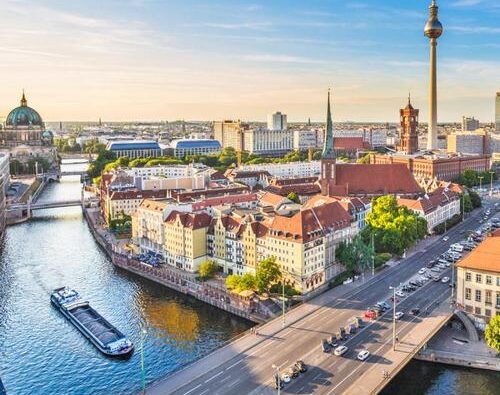Rotterdam is the center of progressive European architecture, the second largest city in the Netherlands. It is very different from other Dutch settlements. If in Amsterdam, Leiden and The Hague, all the attention is occupied by numerous canals, palaces and castles, then a walk in Rotterdam sends you to the future. The symbols of the city – from fancy cubic houses to the monumental Erasmus Bridge and ironic monuments – seem to invite you to look at Europe in a new way.
In 1940, the center of Rotterdam was almost completely destroyed by German fighters, and after the Second World War, the Dutch immediately began to rebuild. The opportunity to rebuild the city spawned architectural experimentation – houses and streets became the embodiment of the functionalism so popular in the middle of the 20th century.
Rotterdam can be reached by train, car or bus from European cities. The train is an ideal option: it will be difficult and expensive to park a car, and the bus trip is quite long, and it does not come to the city center.
The train arrives at Rotterdam Central Station. Walk along Weina Street to Hofplein Square – you will pass between the orderly rows of business centers. The largest port in Europe is located here, so many companies choose this city to locate their offices. When rebuilding Rotterdam, architects were inspired by New York, so the entire business district is a kind of nod to the great city of skyscrapers.
From the square, your route will go along Coolsingel street – on the left you will see the Stadhuis, the town hall, and on the right, the shopping district. Stadhuis is one of the few sites that survived the bombing in the center of Rotterdam. It is noteworthy that it was built only at the beginning of the 20th century – before that, the city government had sat for a long time in a mansion on Hoogstraat. But the narrow lanes and the size of the building at some point became too inappropriate for the city’s sprawling governance.
After going around Stadhuis, turn left onto Meent Street and walk to Binnenrotte, which looks more like a huge square. If you arrive on a Tuesday or Saturday, you will find the city’s most famous flea market. Vintage dishes, antique furniture and decor items are sold here for a penny.
On the right side of the street there is a large horseshoe-shaped building – a complex of apartments and offices with a large city market Markthall, where you can buy delicacies or have a snack at the food court. The interior of the building, the ceiling of the marketplace, is decorated with the largest printed graphics in the world. The Cornucopia work is about the size of two football fields. Interestingly, it took huge servers to process such an image, which Pixar animation studio usually uses.
